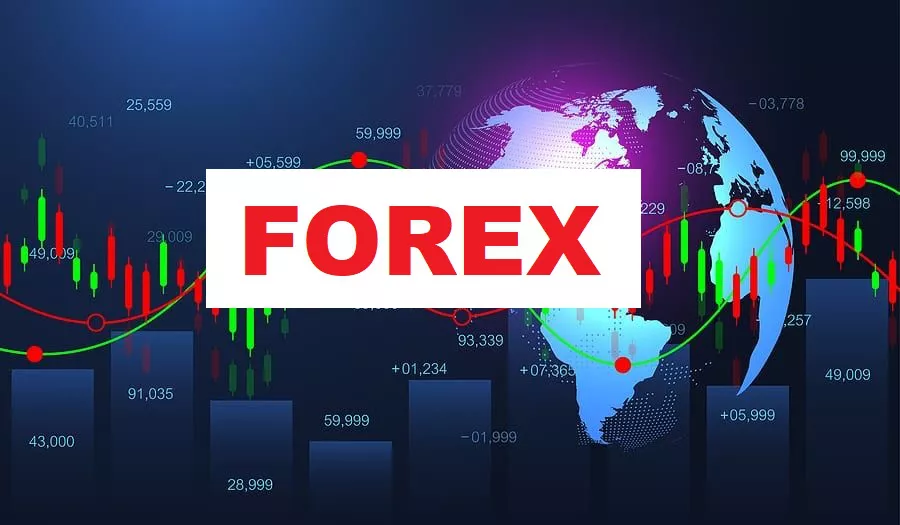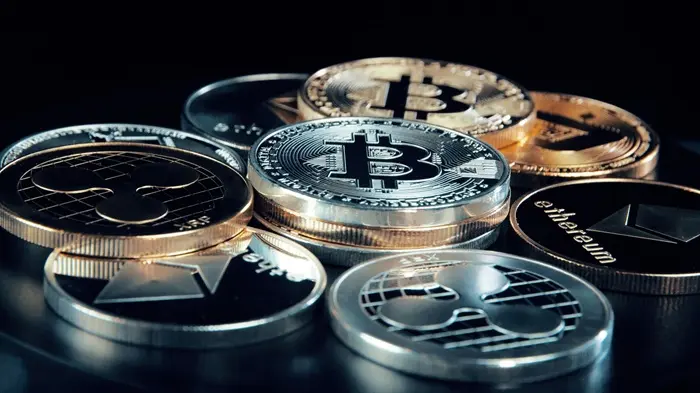In our increasingly globalized world, there are numerous reasons why one might need to send US dollars (USD) to India. It could be for supporting family members, making business payments, investing in Indian markets, or simply fulfilling personal financial obligations. However, the process of sending USD to India isn’t always straightforward and involves several aspects that need to be carefully considered. From choosing the right transfer method to understanding the associated fees, exchange rates, and regulatory requirements, each step plays a crucial role. In this comprehensive article, we’ll explore in detail the different ways to send USD to India and the factors you should keep in mind throughout the process.
Understanding the Basics
1. Why Send USD to India?
As mentioned earlier, there are various motives for sending money to India. Many expatriates working in the United States send money back home to support their families, covering expenses like education, healthcare, and daily living costs. For businesses, it could be to pay suppliers in India for goods or services. Investors might want to transfer USD to invest in Indian stocks, real estate, or other financial assets. Additionally, with the growing popularity of e-commerce and online services, individuals may need to make payments for purchases made from Indian vendors.
2. Currency Exchange Considerations
When sending USD to India, it’s important to understand that the recipient in India will typically receive Indian Rupees (INR). The conversion from USD to INR happens based on the prevailing exchange rate. Exchange rates are constantly fluctuating due to factors like economic data from both countries, monetary policies of the US Federal Reserve and the Reserve Bank of India, and global market sentiment. For example, if the US economy shows strong growth, the USD might strengthen relative to the INR, meaning you’ll get more INR for your USD. On the other hand, if the Indian economy has positive developments, the INR could appreciate. It’s crucial to keep an eye on these exchange rates to ensure you get a favorable conversion when sending money.
3. Regulatory Requirements
Both the US and Indian governments have regulations in place to monitor and regulate cross-border money transfers. In the US, financial institutions are required to comply with anti-money laundering (AML) and know-your-customer (KYC) regulations. This means that when you initiate a transfer of USD, you’ll likely need to provide identification documents like your passport or driver’s license, and information about the purpose of the transfer. In India, the Reserve Bank of India (RBI) has its own set of rules to govern foreign exchange transactions. For instance, there are limits on the amount of money that can be received by an individual in India without specific approvals in certain cases. Understanding these regulatory requirements is essential to avoid any legal issues and ensure a smooth transfer process.
Bank Transfers
1. Using Your US Bank
One of the most common methods to send USD to India is through your US bank. Most major banks offer international wire transfer services. To use this method, you’ll first need to have an account with the bank. You’ll then visit your bank branch or log into your online banking portal. Provide details such as the recipient’s name, bank account number in India, the name of the recipient’s bank, and the bank’s SWIFT code (which is a unique identifier for banks in international transactions). You’ll also need to specify the amount of USD you want to send.
2. Fees and Exchange Rates
Banks usually charge fees for international wire transfers. These fees can vary widely from bank to bank. Some banks may have a flat fee per transfer, while others might charge a percentage of the amount being sent. For example, a bank could charge a flat fee of $30 for an international wire transfer or a fee equivalent to 1% of the USD amount. Additionally, banks apply their own exchange rates for converting USD to INR. These rates are often less favorable than the interbank exchange rates as the bank adds a margin to make a profit. So, you might end up getting fewer INR than you would if you used a different method with a more competitive exchange rate.
3. Processing Time
The processing time for bank transfers can also vary. It typically takes a few business days for the funds to reach the recipient’s account in India. However, it could take longer if there are any issues with the information provided or if additional verification is required. Some banks offer expedited transfer options for an extra fee, which can reduce the processing time to a day or even a few hours in some cases.
Online Money Transfer Services
1. Popular Platforms like Western Union and MoneyGram
Online money transfer services such as Western Union and MoneyGram are widely used for sending money across borders, including sending USD to India. These platforms have a large network of agent locations both in the US and in India. To use them, you can visit their websites or mobile apps. You’ll enter details like the amount of USD you want to send, the recipient’s name, and their location in India. You can then choose to pay for the transfer using various methods like a debit card, credit card, or bank transfer.
2. How They Compare to Banks
Fees: Online money transfer services also charge fees, but their fee structures are different from banks. They may have a combination of a flat fee and a percentage of the amount being transferred. For example, Western Union might charge a flat fee of $15 plus 0.5% of the USD amount. In some cases, for smaller transfers, these services can be more cost-effective than banks, while for larger amounts, the comparison depends on the specific fee details.
Exchange Rates: Similar to banks, these platforms apply their own exchange rates, which usually have a margin added. However, they sometimes offer promotional rates or discounts, especially if you’re a regular user or if you’re sending during a particular promotional period.
Speed: One of the advantages of online money transfer services is speed. In many cases, the recipient in India can receive the money within minutes, especially if they pick it up from a local agent location. This is much faster than the typical processing time for bank transfers.
3. Security and Reliability
Both Western Union and MoneyGram have been in the business for a long time and have established security measures. They use encryption to protect your personal and financial information. However, as with any online service, it’s important to be cautious and make sure you’re using the official website or app. There have been instances of fraud where scammers try to trick users into sending money through fake websites. Always double-check the website address and look for security indicators like a padlock symbol in the browser’s address bar.
Peer-to-Peer (P2P) Platforms
1. How P2P Platforms Work
Peer-to-peer platforms like TransferWise (now known as Wise) and Remitly operate by connecting individuals who want to send money with those who have local currency in the destination country. For example, if you want to send USD to India, the platform might find someone in India who wants to receive USD in exchange for INR. These platforms usually offer more competitive exchange rates compared to banks and traditional money transfer services as they cut out some of the middlemen. To use a P2P platform, you’ll typically create an account, provide identification documents to comply with KYC regulations, and then enter the details of your transfer, including the amount of USD and the recipient’s information in India.
2. Advantages and Disadvantages
Advantages
Better Exchange Rates: As mentioned, P2P platforms often offer exchange rates that are closer to the mid-market rate. This means you can get more INR for your USD compared to using a bank or some other services.
Lower Fees: They generally have lower fees. Some platforms charge a small, flat fee for the transfer, which can make them a cost-effective option, especially for larger amounts.
Transparency: You can usually see the exact exchange rate and fee breakdown before you confirm the transfer, allowing you to make an informed decision.
Disadvantages
Limited Options in Some Cases: Not all P2P platforms may support transfers to all regions in India or may have restrictions on the amount you can send based on various factors.
Processing Time: While some P2P platforms offer relatively quick transfers, in some cases, it can still take a day or two for the funds to be fully processed and available to the recipient, depending on the platform’s processes and any additional verification requirements.
Cryptocurrency Transfers (with Caution)
1. Using Cryptocurrencies like Bitcoin
Some people are exploring the option of using cryptocurrencies to send money to India. For example, you could convert your USD into Bitcoin in the US and then send the Bitcoin to someone in India who can convert it back into INR. Cryptocurrencies operate on blockchain technology and can offer fast and potentially low-cost transactions across borders. However, this method comes with significant risks and challenges.
2. Risks and Regulatory Uncertainties
The cryptocurrency market is highly volatile. The value of Bitcoin or other cryptocurrencies can change rapidly, which means the amount of INR the recipient in India might receive could vary greatly depending on the exchange rate at the time of conversion. Moreover, the regulatory environment for cryptocurrencies is still evolving in both the US and India. In India, there have been discussions and varying stances on the legality and regulation of cryptocurrencies. There’s a risk that using cryptocurrencies for cross-border transfers could run afoul of existing or future regulations, potentially leading to financial losses or legal issues.
3. How to Do It (if You Still Choose to)
If you decide to use cryptocurrencies for sending USD to India despite the risks, you’ll first need to set up a cryptocurrency wallet. You’ll then find a reliable cryptocurrency exchange where you can buy Bitcoin or another suitable cryptocurrency using your USD. After purchasing the cryptocurrency, you’ll send it to the recipient’s cryptocurrency wallet in India. The recipient will then need to find a way to convert the cryptocurrency back into INR, which could involve using a local cryptocurrency exchange or other services, but again, this process is fraught with risks and uncertainties.
Choosing the Right Method for You
1. Considering Your Needs
When deciding which method to use for sending USD to India, consider your specific requirements. If speed is of the essence and you don’t mind paying a bit more in fees for an instant transfer, online money transfer services like Western Union or MoneyGram might be a good option. If you’re looking for the best exchange rate and are willing to wait a bit longer for the transfer to process, P2P platforms could be more suitable. For larger, more formal business transactions, bank transfers might be preferred due to their established nature and compliance with regulatory requirements.
2. Comparing Costs
As we’ve seen, different methods have different fee structures and exchange rates. Take the time to compare these aspects. Calculate how much INR the recipient will actually receive after considering both the fees and the exchange rate applied by each method. For example, if you’re sending $1000, see how much it amounts to in INR with a bank transfer versus a P2P platform. Even a small difference in the exchange rate or fees can add up to a significant amount over time or for larger transfers.
3. Checking for Promotions and Discounts
Many money transfer services offer promotions, discounts, or loyalty programs. Keep an eye out for these. For instance, a platform might offer a waived fee for first-time users or a reduced exchange rate during a particular holiday season. Taking advantage of such offers can help you save money on your transfers.
Tips for a Smooth Transfer Process
1. Double-Check Information
Before confirming any transfer, make sure all the details you’ve entered are correct. This includes the recipient’s name, bank account number, and the SWIFT code (if applicable). A small error in these details can lead to delays or even the transfer being sent to the wrong account.
2. Keep Records
Maintain records of all your transfer transactions. This includes the confirmation receipts, details of the fees paid, and the exchange rate used. These records can be helpful for tracking your transfers, reconciling accounts, and in case there are any issues or disputes later.
3. Stay Informed About Regulations
The regulatory landscape for cross-border money transfers can change. Stay updated on any new rules or requirements in both the US and India. This will help you ensure that your transfers are always compliant and avoid any unexpected problems.
Conclusion
Sending USD to India involves a careful consideration of multiple factors, from the transfer method and its associated costs to the regulatory environment and security aspects. By understanding the different options available, comparing them based on your needs, and following the tips provided, you can make the process smoother and more cost-effective. Whether it’s for personal or business reasons, choosing the right way to send money is crucial to ensure that your funds reach the intended recipient in a timely and hassle-free manner.
Related topics:

































